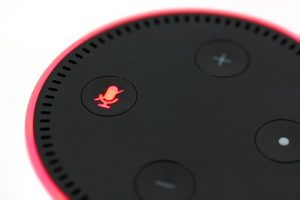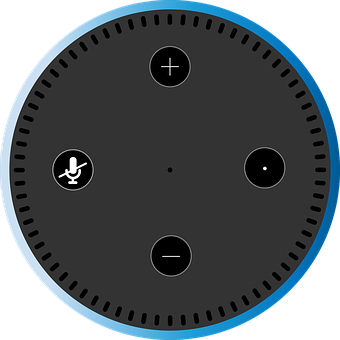Alexa Setup
Alexa is a popular artificial intelligence (AI) voice assistant developed by Amazon. It is designed to perform various tasks and interact with users through voice commands. Alexa can play music, provide weather updates, answer questions, control smart home devices, set reminders, and much more. With its ever-expanding range of skills and integrations, Alexa has become a central hub for managing daily tasks and accessing information. In this blog, we share the information to set up Alexa echo quickly by following set-by-step process.
 Setting up Alexa echo correctly ensures optimal performance and enables users to take advantage of all its features and functionalities. Without proper installation, users may encounter connectivity issues, limited functionality, or difficulties in accessing Alexa’s full potential. A well-executed Alexa echo setup ensures a smooth and hassle-free user experience, allowing individuals to enjoy the benefits and convenience of Alexa’s capabilities fully.
Setting up Alexa echo correctly ensures optimal performance and enables users to take advantage of all its features and functionalities. Without proper installation, users may encounter connectivity issues, limited functionality, or difficulties in accessing Alexa’s full potential. A well-executed Alexa echo setup ensures a smooth and hassle-free user experience, allowing individuals to enjoy the benefits and convenience of Alexa’s capabilities fully.
By understanding the capabilities of Alexa and the significance of a proper set up Alexa echo, users can proceed confidently in the subsequent installation process.
Here, users are encouraged to check the compatibility and requirements for their Alexa device. Different models of Echo devices may have specific compatibility requirements, such as operating system versions or Wi-Fi network specifications. It is essential to review the device’s documentation or consult the manufacturer’s website to ensure compatibility with the intended setup environment.
Users are also advised to check their internet connection speed and stability, as Alexa relies on a consistent connection to function optimally. It may be necessary to troubleshoot network issues, upgrade internet plans, or position the device closer to the Wi-Fi router to improve connectivity.
By adequately preparing for the Alexa echo setup, users can avoid potential setbacks and ensure that they have all the necessary equipment and requirements in place before proceeding. This helps create a smooth and efficient set up Alexa echo process.
How to Set up Alexa Echo:
Whether you have recently acquired an Echo, Echo Dot, Echo Show, or any other member of the Echo family, or you’re looking to reconnect an existing device, this section will walk you through the Alexa echo setup process step by step.
Setting up Alexa Echo device is a simple and intuitive process that will have you enjoying the benefits of hands-free voice control and access to a multitude of features. By following the instructions outlined in this guide, you’ll be able to seamlessly integrate your Echo device into your home.
- Unboxing and inspecting the Echo device: Users are advised to carefully unpack the device, remove any protective coverings, and visually inspect it for any signs of damage or missing components. It is recommended to refer to the device’s user manual for guidelines on how to handle and unbox the Echo device properly.

- Connecting the power adapter and cable: Users have to connect the power adapter and cable to the Echo device. Users have to locate the power port on the Echo device and plug in the power adapter securely to start the set up Alexa echo process. The other end of the cable is connected to a power outlet. Users should ensure that the power source is easily accessible and meets the necessary electrical requirements.
- Downloading and installing the Alexa app: Users are directed to the relevant app store (e.g., Apple App Store, Google Play Store) to search for the Alexa app. Once found, you can start the installation process, including accepting permissions and signing in to their Amazon account if required.
- Logging in or creating an Amazon account: For setting up Alexa echo, logging in to the existing account or create a new one is necessary. Now enter the credentials or follow the account creation prompts provided by the Alexa app. An Amazon account is necessary to fully utilize Alexa’s features and functionalities and connect the Echo device to the user’s personal settings and preferences.
- Connecting Echo to Wi-Fi network: Now to you have to access the Wi-Fi settings on the Alexa app, selecting the desired network, and enter the network password if required. It is emphasized that the Echo device should be placed within range of the Wi-Fi router to ensure a stable and reliable connection. We have also mentioned detailed steps to setup Alex to wifi.
- Customizing Echo settings: In this step you have to personalize settings such as language, time zone, and other preferences according to their preferences. This step ensures that the Echo device is tailored to the user’s specific needs and enhances the overall user experience.
By following the step-by-step instructions provided in this section, users can successfully set up Alexa Echo device and proceed to the next stages of configuration and exploration.
How to Set up Alexa to Wifi:
To set up Alexa echo to connect to your Wi-Fi network first you have to power on the device and open the Alexa application as mentioned in the previous section. Now for Alexa wifi setup process you have to follow these steps:
- Open the Alexa App: Launch the Alexa app on your smartphone or tablet.
- Sign in to your Amazon account: Use your Amazon account credentials to sign in to the Alexa app. If you don’t have an Amazon account, you’ll need to create one.

- Add a new device: In the Alexa app, tap the “Devices” icon at the right bottom corner of the screen.
- Tap the “+” icon: Look for the “+” icon in the top right corner of the “Devices” screen and tap on it to start adding a new device.
- Select the device type: Choose the type of device you want to set up Alexa Echo (e.g., Echo, Echo Dot, Echo Show).
- Connect to Wi-Fi: For Alex wifi setup follow the instructions on-screen in the Alexa app to connect your device to your Wi-Fi network. Make sure your smartphone or tablet is connected to the Wi-Fi network you want to use with Alexa.
- Enter Wi-Fi network details: Provide the necessary information, such as your Wi-Fi network name (SSID) and password. Make sure to enter the correct details.
- Wait for Alexa setup completion: The Alexa app will guide you through the Alexa setup process. Your Amazon Alexa device will connect to the Wi-Fi network, which may take a few moments. Once the setup is complete, Alexa will confirm the connection.
- Test the connection: Use voice commands or the Alexa app to interact with your Alexa device and confirm that it is connected to the Wi-Fi network successfully.
By following this section you will get answer to your question of how to set up Alexa to wifi. Your Alexa device should now be connected to your Wi-Fi network, and you can start using it to interact with Alexa and access various features and skills.
Configuring Alexa Preferences:
In this part of our guide, we will delve into the settings and preferences that enable you to tailor Alexa to your specific needs and preferences. Whether it’s customizing the wake word, adjusting volume levels, changing the language, or utilizing location-specific features, configuring Alexa preferences allows you to create a truly personalized and seamless interaction with your device.
- Wake Word Customization: Choose a wake word that suits you best for initiating voice commands effortlessly. Whether it’s “Alexa,” “Echo,” “Amazon,” or “Computer,” select the one that feels most natural to you.

- Volume Level Adjustments: Fine-tune the volume settings to ensure optimal sound quality and audibility. Adjust the volume levels according to your environment and personal preference.
- Language Selection: Select your preferred language to interact with Alexa in a language you are most comfortable with. Enjoy a seamless conversation and accurate responses in your chosen language.
- Location-Specific Features: Configure location preferences to receive tailored information based on your area. Get accurate weather updates, local news, traffic reports, and personalized recommendations specific to your location.
- Privacy and Security Settings: Take control of your privacy and security by managing voice recordings and reviewing privacy options. Customize how your data is stored and used, ensuring your preferences are respected.
- Custom Skills and Routines: Explore the wide range of available skills and create personalized routines. Enable and disable skills according to your interests and needs, and set up routines that automate multiple actions with a single command.
By configuring these preferences, you can truly personalize your Alexa experience, making it more convenient, relevant, and aligned with your unique preferences and lifestyle. Dive into the settings and unleash the full potential of your Alexa device!
Common Alex Echo Setup issues:
Setting up Alexa Echo device should be a smooth and seamless experience. However, we understand that technical glitches or uncertainties can arise. That’s why we’ve compiled a list of troubleshooting tips & frequently asked questions to assist you in overcoming common hurdles.
- Power and Connectivity: Ensure that your Echo device is properly connected to a power source and that your Wi-Fi network is stable and functional.
- Wi-Fi Connection Issues: Double-check your Wi-Fi network name (SSID) and password during the Alexa setup process. Make sure you’re entering the correct information.

- Echo Device Not Responding: Try restarting your Echo device by unplugging it from the power source and plugging it back in. Wait for it to power up and try the Alexa set up process again.
- Alexa App Troubleshooting: If you encounter issues with the Alexa app, try closing and reopening it or uninstalling and reinstalling it on your smartphone or tablet.
- Wake Word Detection Problems: If your Echo device doesn’t respond to the wake word consistently, consider changing the wake word to a different option to improve recognition.
- Interference and Placement: Ensure that your Echo device is placed away from potential sources of interference, such as other electronic devices or physical obstructions, which could affect its performance.
- Firmware Updates: Keep your Echo device’s firmware up to date by enabling automatic updates in the Alexa app. This helps ensure that you have the new features & bug fixes.
- Resetting Your Echo Device: If you’re experiencing persistent issues, you may need to reset your Echo device to factory settings. Refer to the device-specific instructions for the reset process.
- Common FAQs: Refer to the official Amazon Alexa support website or community forums for frequently asked questions related to Alexa set up and troubleshooting. You may find solutions to common issues others have encountered.
Remember, if you encounter persistent issues during the Alexa setup process or troubleshooting, it’s always recommended to consult the official support resources provided by Amazon or contact their customer support for further assistance.
Conclusion:
The blog reiterates the significance of a proper Alexa setup and installation. It emphasizes that a well-executed Alexa set up ensures optimal performance, functionality, and user experience with the Alexa Echo device. By following the recommended steps and guidelines, users can avoid connectivity issues, maximize the capabilities of their device, and seamlessly integrate Alexa into their daily routines.
The conclusion encourages users to explore and fully utilize the extensive capabilities of Alexa. It highlights the versatility of Alexa Skills, the convenience of voice commands for various tasks, and the integration with smart home devices. Users are inspired to delve into the diverse range of Skills and features available, experiment with routines, and discover new ways to simplify their lives and enhance their smart home ecosystem.
By concluding with a reminder of the importance of Alexa setup and encouraging users to embrace the potential of Alexa, the blog leaves readers feeling informed, empowered, and excited to embark on their Alexa journey. Users can also visit the Alexa support page to know more about Alexa and troubleshoot it related issues.

